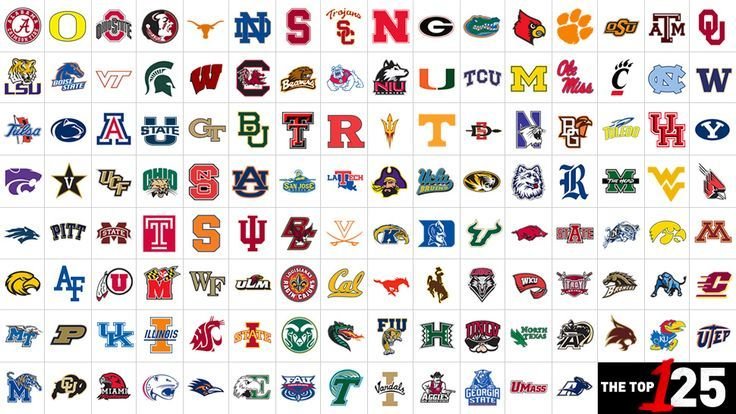Budget Constraints and the Price Ratio
Christopher Makler
Stanford University Department of Economics
Econ 50: Lecture 5

Plus office hours at 3-5pm in Econ 151!
pollev.com/chrismakler

What song is playing right now?
ATTENDANCE QUESTION
FRIDAY
THURSDAY
So much free boba at Landau!!!
Econ Major welcome back event
4-6pm
Free boba for the first 40 students!
Agenda for Today
Part I: Simple Budget Constraints
Part II: More Complexity, More Realism
- Mathematics of the budget constraint
- Geometry of a budget line
- Interpreting the price ratio as the opportunity cost of good 1
- Trading from an endowment
- Kinked constraints
Part I: Simple
Budget Lines
Choice space:
all possible options
Feasible set:
all options available to you
Optimal choice:
Your best choice(s) of the ones available to you
Constrained Optimization

Choice Space
(all colleges plus alternatives)
Feasible Set
(colleges you got into)
Your optimal choice!
Preferences
Preferences describe how the agent ranks all options in the choice space.
For example, we'll assume that you could rank all possible colleges
(and other options for what to do after high school) based upon your preferences.
Preference Ranking
Found a startup
Harvard
Stanford
Play Xbox in parents' basement
Cal
Choice space
Feasible set
Optimal
choice!
Found a startup
Stanford
Cal
Harvard
Play XBox in parents' basement
Optimal choice is the highest-ranking option in the feasible set.
One type of feasible set: the budget set
Prices and Expenditure
Suppose each good has a constant price
(so every unit of the good costs the same)
Affordability
Suppose you have a given income \(m\)
to spend on goods 1 and 2.
Then bundle \(X = (x_1,x_2)\) is affordable if
The feasible set, or budget set, is the set of all affordable bundles.
Example: suppose you have \(m = \$24\) to spend on two goods.
Good 1 costs \(p_1 = \$4\) per unit.
Good 2 costs \(p_2 = \$2\) per unit.
Is the bundle (2,4) affordable (in your budget set)? What about the bundle (4,6)?
Draw your budget set.
How would it change if the price of good 2 rose to \(p_2' = \$6\) per unit?
How would it change if your income rose to \(m' = \$32\)?
Budget Line
pollev.com/chrismakler

Holding income and the price of good 2 constant, an increase in the price of good 1 will cause the budget line to become:
steeper
flatter
it depends on thelevel of income
it depends on the price of good 2
Interpreting the Slope of the Budget Line
Example:
Apples cost 50 cents each
Bananas cost 25 cents each
Slope of the budget line represents the opportunity cost of consuming good 1, as dictated by market prices.
In other words: it is the amount of good 2 the market requires you to give up in order to get another unit of good 1.

pollev.com/chrismakler
If apples (good 1) cost $0.80 each,
and bananas (good 2) cost $0.20 each, what is the magnitude (absolute value) of the slope of the budget line?
Composite Goods
You have $100 in your pocket.
You see a cart selling apples (good 1) for $2 per pound.
- Plot your budget line.
- What is "good 2"?
- What does the bundle (10,80) signify?
- What is the slope of the budget line, and what are its units?
Part II: More Complicated (and Realistic) Budget Constraints
Trading from an Endowment
Good 1
Good 2
Note: lots of different notation for the endowment bundle!
Varian uses \(\omega\), some other people use \(x_1^E\)
Suppose you'd like to move from that endowment to some other bundle X
You start out with some endowment E
This involves trading some of your good 1 to get some more good 2
Buying and Selling
Good 1
Good 2
If you can't find someone to trade good 1 for good 2 directly, you could sell some of your good 1 and use the money to buy good 2.
Suppose you sell \(\Delta x_1\) of good 1 at price \(p_1\). How much money would you get?
Suppose you wanted to buy \(\Delta x_2\) of good 2 at price \(p_2\). How much would that cost?
Buying and Selling
Good 1
Good 2
If the amount you get from selling good 1 exactly equals the amount you spend on good 2, then
monetary value of \(E\)
at market prices
monetary value of \(X\)
at market prices
(Basically: you can afford any bundle with the same monetary value as your endowment.)
Endowment Budget Line
Good 1
Good 2
If you sell all your good 1 for \(p_1\),
how much good 2 can you consume?
If you sell all your good 2 for \(p_2\),
how much good 1 can you consume?
If \(x_1 = 0\):
If \(x_2 = 0\):
Endowment Budget Line
Good 1
Good 2
Liquidation value of your endowment
Divide both sides by \(p_2\):
Divide both sides by \(p_1\):
In other words: the endowment budget line is just like a normal budget line,
but the amount of money you have is the liquidation value of your endowment.
Endowment Budget Line
Divide both sides by \(p_2\):
Divide both sides by \(p_1\):
The budget line only depends on the price ratio \({p_1 \over p_2}\),
not the individual prices.
Effect of a Change in Prices
What happens if the price of good 1 doubles?
What happens if both prices double?


pollev.com/chrismakler

Bob has an endowment of (8,8) and can buy and sell goods 1 and 2. What happens to his endowment budget line if the price of good 1 decreases? You may select more than one answer.

Kinked Constraints
- Remember: the slope of the budget line is the price ratio (opportunity cost of good 1)
- Straight budget line: every unit of every good costs the same amount
- Kinked budget constraint: prices of at least one good are different over different portions of the constraint
Different Prices for Buying and Selling
Tickets
Money
If you sell all your tickets,
how much money will you have?
If you spend all your money on additional tickets, how many tickets will you have?
Suppose you have 40 tickets and $1200.
1200
40
2200
Slope = \(p^{\text{sell}}\) = $25/ticket
Slope = \(p^{\text{buy}}\) = $60/ticket
You can sell tickets for $25 each,
or buy additional tickets for $60 each.
60
Tiered Pricing for Electricity Rates
kWh
Money
Suppose you start out with \(m\) dollars.
What does your budget constraint look like?
300
\(m\)
Slope = $0.10/kWh
Slope = $0.20/kWh
Palo Alto has a tiered pricing policy for electricity rates. While it's changed in recent years, it used to be the something like the following:
- First 300 kWh per month: $0.10/kWh
- After that: $0.20/kWh
\(m-30\)
Let \(x_1\) be kWh of electricity per month, and \(x_2\) be money spent on other things.
Should you give cash or a gift card?


What do you think about this "proof"?
Are you only ever going to give cash from now on?
Summary and Next Steps
- Budget constraints divide the choice space into affordable and unaffordable sets
- The slope of the budget line at any point is the pricr ratio \(p_1/p_2\), which represents the opportunity cost of good 1, in terms of good 2.
- A simple "budget line" with constant prices \(p_1\) and \(p_2\), and exogenous income \(m\), has the equation \(p_1x_1 + p_2x_2 = m\)
- And endowment budget line with constant prices \(p_1\) and \(p_2\), and an endowment of \((e_1,e_2)\), has the equation \(p_1x_1 + p_2x_2 = p_1e_1 + p_2e_2\)
- With more complex constraints, have to think about how the price ratio differs over the constraint, and what the coordinates of relevant points are
- Next: find the most preferred point on the constraint
- In section: learn about the Lagrange method for constrained optimization
Econ 50 | Fall 25 | Lecture 05
By Chris Makler
Econ 50 | Fall 25 | Lecture 05
Budget constraints and the price ratio
- 378



